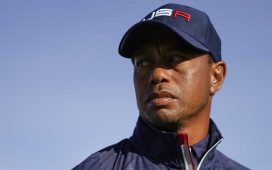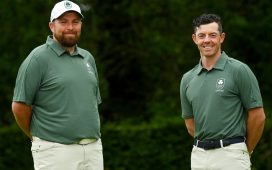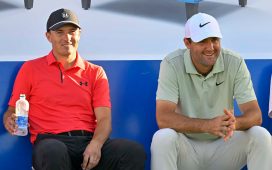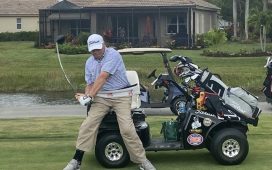It was hard to watch. Michelle Wie pulling ice out of the cooler on her second hole of the day in her first round back in months. She winced her way around Hazeltine National, icing and rubbing her wrist in between shots, causing most of us to wonder which swing would be the one that would end her day.
It seemed like a miracle that she finished. No one cared about the score. Especially not after Wie broke down in tears afterwards, questioning how much time she had left in this game.
If it’s this bad, why did she come?
To hear Wie tell it, she just couldn’t stay away.
Which is why Friday’s announcement that she’s not coming back for the rest of 2019 comes with a sense of relief. If there’s a chance for Wie to stay in this game past the age of 30, prolonged rest seems like her best chance.
MORE: Wie announces break from golf on Instagram
No one wants to watch Wie hobble around another major. Listening to your body is a tough thing for an athlete to do when the heart and brain scream “Go!”
Wie will miss the Solheim Cup for the first time since 2009. She’ll miss the last two majors of the season. She teed it up in five events this year, finishing four rounds only once in Thailand. That was back in February.
Golf Channel analyst Arron Oberholser suffered a similar injury to his left hand at the 2007 Byron Nelson. He’d overcooked one down by the pond on the 18th and had a clean look at the back of the ball. What he didn’t see was the massive clump of green in front of the ball. He thought he could blow right through it and it stopped at impact, full speed.
“It felt like someone drove an ice pick through my wrist,” he said.
Oberholser unknowingly played through the FedEx Playoffs with a broken bone in his hand. He had four surgeries, but the injury ultimately ended his career. Even now, Oberholser says he can’t play more than two or three days in a row without taking anti-inflammatory medicine.
“I guarantee you that – everything in (Wie’s) hand is repaired,” he said. “It’s repaired. Like my hand is repaired. But we’re both playing at 60 or 70 percent of what we’re capable of playing because of the surgery and what’s going on, and that’s what arthritic symptoms do to your hands.”
One key difference between their two injuries, he said, is that Wie’s right hand is the one that required surgery.
“That’s the nice thing, having a trail hand injury is better than having a lead hand injury on the golf swing,” he said. “Can it be managed is the question. Mine could not be managed because it was mainly the lead hand, and I’m missing bones on top of having a broken bone in there.”
No two bodies or injuries are alike, of course. If Wie had taken more time off from injuries earlier in her career, would this be different?
Oberholser has recently discovered that genetics play a part in his case. His tissue isn’t as strong as other people’s.
Wie, 29, has been under the microscope in this game more than half her life. No one in the women’s game has carried the weight of expectation that Wie has endured. Her body has spoken.
Whether or not her body gets the last word, however, remains to be seen.
Wie made one thing clear in Hazeltine National – she’s not ready to quit.








